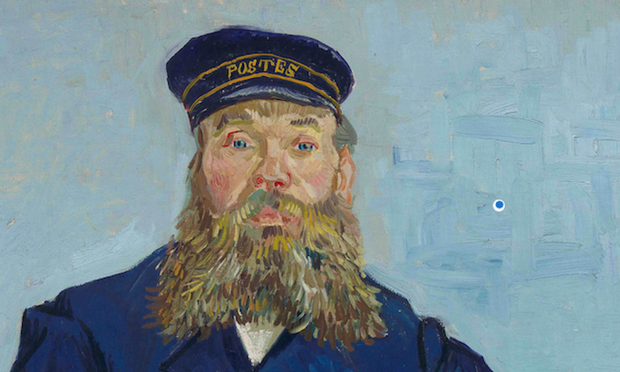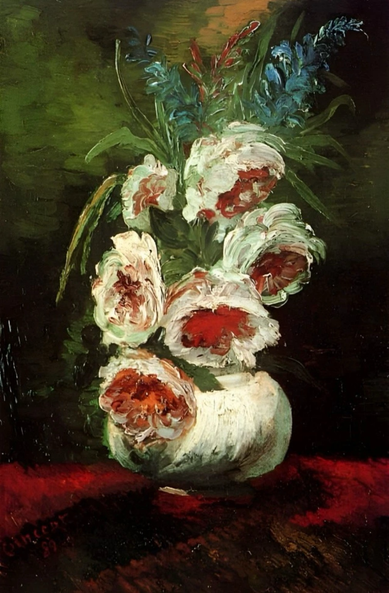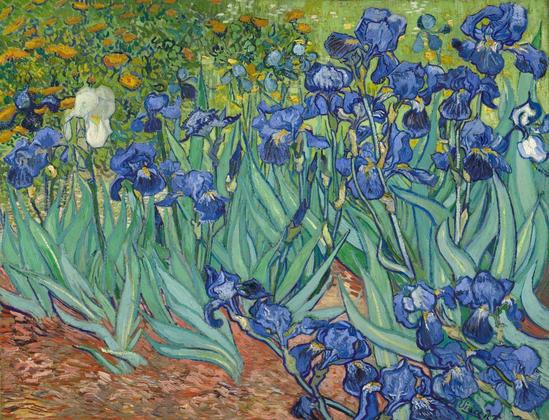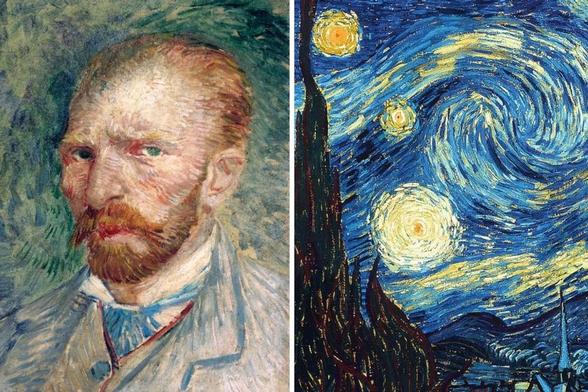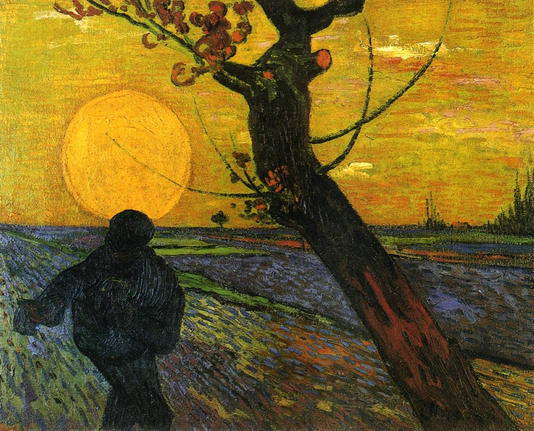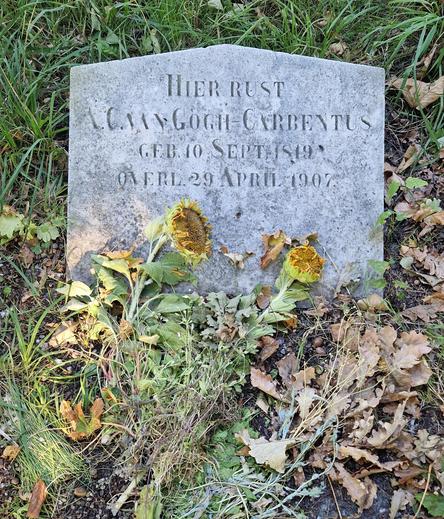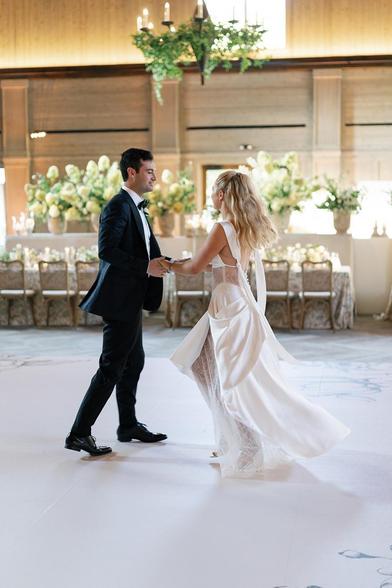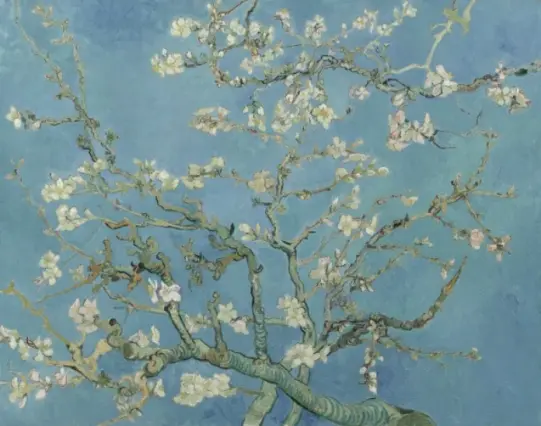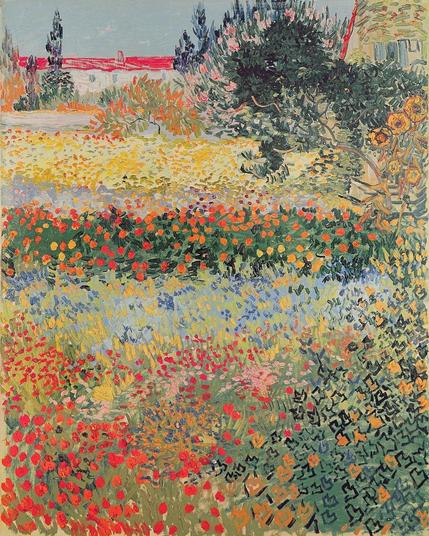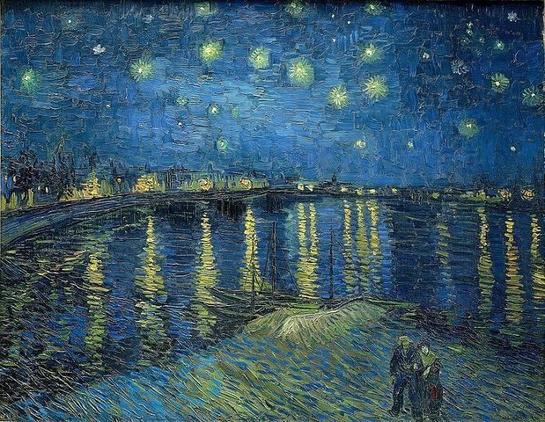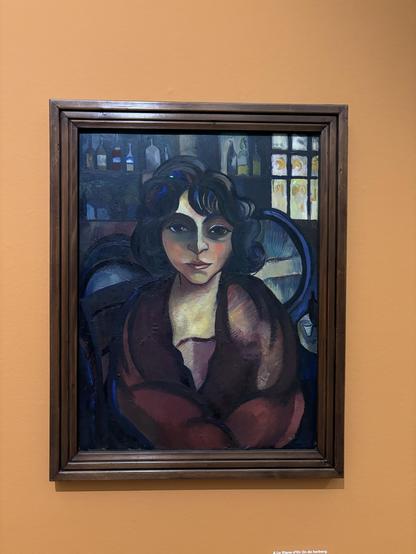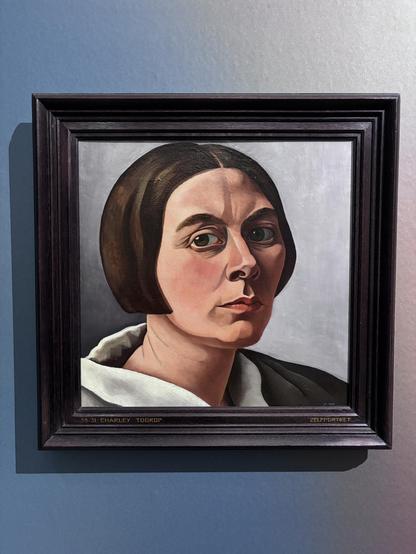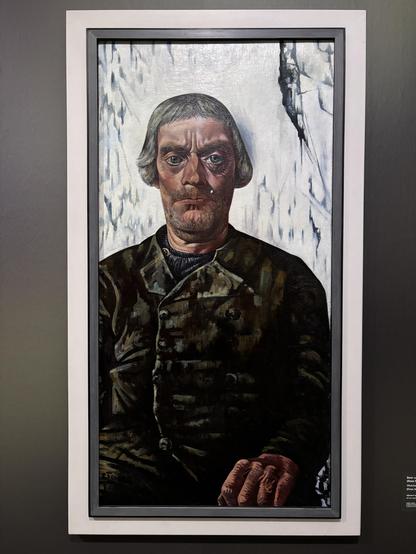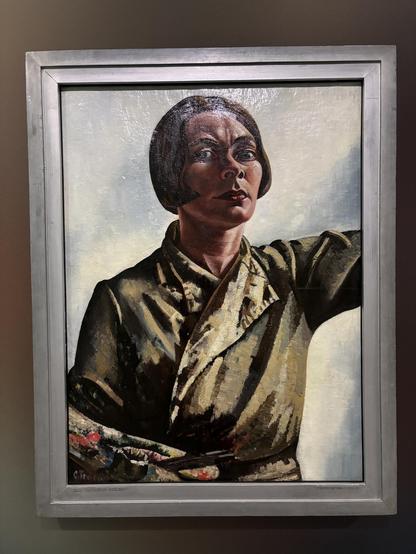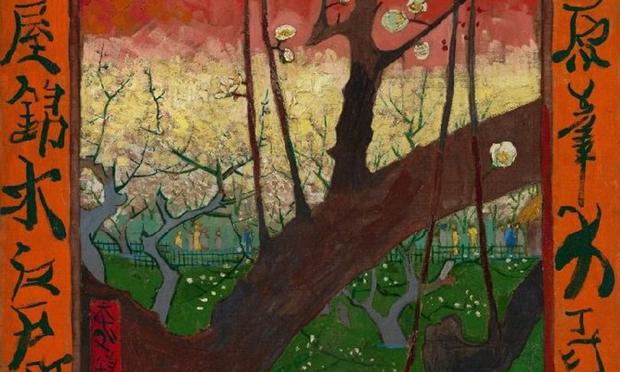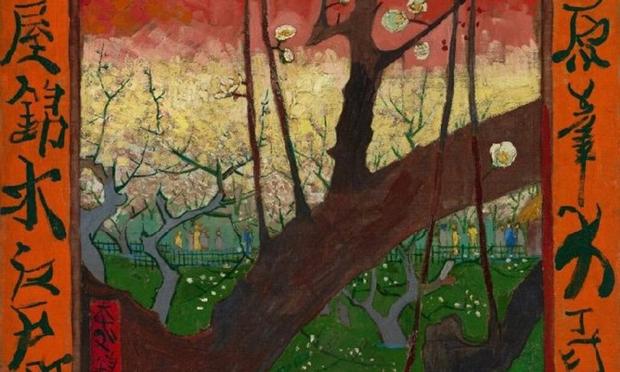Van Gogh’s ‘Postman’, and the very chair seen in the painting, go on show in a revelatory Amsterdam exhibition https://www.theartnewspaper.com/2025/10/03/van-goghs-postman-and-the-very-chair-seen-in-the-painting-go-on-show-in-a-revelatory-amsterdam-exhibition?utm_source=dlvr.it&utm_medium=mastodon #AdventureswithVanGogh #VincentvanGogh
#VincentvanGogh
"Vincent" is a song by #DonMcLean, written as a tribute to #VincentVanGogh. Its commonly known opening lyric, "#StarryStarryNight", is a reference to Van Gogh's 1889 painting #TheStarryNight. McLean wrote the lyrics in 1970 after reading a book about the life of Van Gogh. It was released on McLean's 1971 #AmericanPie album; the following year, the song topped the #UKSinglesChart for two weeks, and peaked at No. 12 in the United States.
https://www.youtube.com/watch?v=oxHnRfhDmrk
Morning Snow 🇨🇦 —
I chanced upon this in the form of an old card my best friend Cindy (who passed eight years ago) who also favoured peonies, had sent to me decades ago. ☺️
It’s lovely to be reminded of her through your mutual favoured flower. 💜💜💜
Van Gogh had quite the green thumb, so to speak.
Vase of Peonies | 1886
#VincentvanGogh #peonies-for-snow
Wishing you and the hubby a wonderful Wednesday.
Vincent van Gogh - The Irises, 1889
“The lightning rod for my illness,” Van Gogh said about this work, which he painted shortly before his first admission to a psychiatric institution. The canvas reveals a great sense of tension and restlessness.
#Art #PostImpressionism #VanGogh #VincentVanGogh #Painting #Schilderij #Kunst #Arte #Peinture #Pintura #Gemälde #Iris #Flowers #Creativetoots #Olieverf #Peinturealhuile #Impressionism #Impressionismus #Impressionisme #Impresionismo #Impressionismo
10 fascinating #facts about #VincentvanGogh and his famous #StarryNight #painting
https://www.upworthy.com/10-facts-about-vincent-van-gogh-and-his-famous-starry-night-painting-ex1
10 fascinating facts about Vincent van Gogh and his famous 'Starry Night' painting
Sower with Setting Sun by Vincent van Gogh, 1888 (oil on canvas)
#vangogh #vincentvangogh #art #painting #postimpressionism
👆🏽 H/T: Kaushik
Ironically, I read this news *while* listening to the latest (archive) episode 🎧 on Vincent van Gogh: https://overcast.fm/+AAIPNzg22kE
#InOurTime #Podcasts #BBC #BBCRadio #BBCSounds #Art #VincentVanGogh #Biography #Artists #Retirement
📰 Today's top stories, curated for you by Zorz Studios: http://zorz.it/newspaper
Understated #beauty meets #NaturalCharm in this lakeside celebration;
- #Photographer thrifts $2,000 #LeicaM3 for just $10;
- 5 proven ways to get repeat #PhotographyClients without cutting rates;
- 6 top quality #menswear must-haves from R.M Williams this autumn;
- 1,000+ #artworks by #VincentVanGogh digitized and put online by #DutchMuseums, and more
Van Gogh Museum Faces Uncertain Future
A Broken Promise Threatens a Global Treasure
The world-renowned Van Gogh Museum in Amsterdam, a cultural cornerstone holding the largest collection of Vincent van Gogh’s work, faces an unprecedented risk of closure. This alarming situation stems from a critical funding dispute with the Dutch government. Museum Director Emilie Gordenker delivered a stark warning, stating that without adequate financing for vital maintenance, the safety of its priceless art and its millions of visitors cannot be guaranteed. This is not merely a budget disagreement; it is a conflict that strikes at the heart of a historic promise made to the Van Gogh family over sixty years ago, threatening the very future of this iconic institution.
Vincent van Gogh, Almond Blossom,1890, Van Gogh Museum, Amsterdam (Vincent van Gogh Stichting)A Legacy Built on a Pact
To understand the gravity of the current crisis, one must look back to 1962. Vincent Willem van Gogh, the artist’s nephew known as ‘The Engineer,’ made a landmark agreement with the Dutch State. To prevent his uncle’s priceless collection from being scattered across the globe, he transferred it in its entirety to the specially created Vincent van Gogh Foundation. This incredible gift included over two hundred paintings, five hundred drawings, and nearly nine hundred letters. In return, the Dutch government made a solemn promise. It committed itself to building and, crucially, maintaining a museum to house this collection for the public, forever. This was a visionary pact that rightly prioritized cultural heritage over financial cost.
From Amsterdam Icon to International Success
Since opening its doors in 1973, the Van Gogh Museum has become a monumental success. It has welcomed nearly 57 million people through its halls, with visitor numbers reaching a high point of 2.6 million in 2017 alone. The museum acts as a powerful engine for Amsterdam’s cultural reputation and the Dutch tourism economy. Remarkably, it generates 85% of its own income, a figure that far surpasses many other public museums and underscores its incredible global appeal. This financial independence makes the current funding shortfall even more perplexing. The museum is a success story by any measure, yet its future is now in jeopardy.
Cracks in the Canvas: The Urgent Need for Renovation at the Van Gogh Museum
The museum’s immense popularity has, however, come at a cost. The main building, now over fifty years old, was never designed for such intensive, modern footfall. Consequently, it no longer meets today’s essential requirements for safety, climate control, and sustainability. Most of the technical systems are obsolete. Their failing parts are increasingly difficult, and sometimes impossible, to replace. This is not a matter of simple upkeep; it is a critical situation that requires a complete and immediate overhaul.
Masterplan 2028: A Vision for the Future
To address these systemic failures, the Van Gogh Museum has developed a comprehensive renovation strategy called Masterplan 2028. This vital project is slated to begin in 2028. It is expected to last approximately three years, during which the museum plans to remain partially open to the public. The plan addresses mandatory sustainability upgrades required for all Dutch public buildings from 2024 onwards. Moreover, it is absolutely essential to comply with legal and contractual safety obligations. Without these upgrades, as the director warns, the situation will become “dangerous for the art and dangerous for our visitors.”
The Financial Standoff: A Promise in Peril
The core of this dispute lies in a relatively small but critical funding gap. The total cost for Masterplan 2028 is budgeted at €104 million. This includes €76 million for maintenance and replacement, €23 million for sustainability, and €5 million for other improvements. To finance the project and save for future major maintenance, the museum requires an annual contribution of over €11 million. However, the Ministry of Education, Culture and Science will not commit more than its current €8.5 million subsidy. This leaves a crippling annual deficit of €2.5 million.
The Van Gogh Museum has already committed its own resources to make the renovation possible. For instance, it is covering the estimated €50 million in lost revenue during the partial closures. It is also allocating its own capital to be eligible for a state loan. Despite these significant contributions, the government’s refusal to close the €2.5 million gap has brought the entire project to a standstill.
Is a Promise from 1962 Still Binding?
This is more than a financial debate. It is a question of national integrity. The Vincent van Gogh Foundation, which formally owns the collection, has expressed deep concern. It fully supports the museum’s position, reminding the government of the legally established obligations it accepted in the 1962 agreement. The situation has become so dire that the museum has taken the serious step of filing a legal complaint against the state.
From a cultural standpoint, the government’s position is difficult to defend. A promise that secures a nation’s most precious artistic treasures should not have an expiration date. This standoff raises a fundamental question: What is the value of a nation’s word? If the state fails to honor the very agreement that created the Van Gogh Museum, it sends a chilling message about its commitment to preserving cultural heritage. The solution is simple: the government must allocate the necessary resources and uphold its end of the historic bargain. The future of one of the world’s most beloved museums absolutely depends on it.
Feel free to browse WE AND THE COLOR’s Art section for more.
Subscribe to our newsletter!
By continuing, you accept the privacy policy#amsterdam #art #europe #museum #news #VanGogh #VanGoghMuseum #VincentVanGogh
Vincent van Gogh, Tuin in bloei (1888)
Bloemen in stippen en streken. Een orkest van kleuren. De verf lijkt haast te bewegen, als de wind door een bloemenveld.
#Art
#VanGogh
#VincentVanGogh
Vincent Willem van Gogh
#ВінсентВанГог
«Зоряна ніч над Роною» 1888
У колекції Ван Гога була ще одна «Зоряна ніч». Приголомшливий краєвид нікого не може залишити байдужим. Сам художник після створення цієї картини писав братові Тео: «Чому ж яскраві зірки на небі не можуть бути важливішими за чорні крапки на карті Франції? Так само, як ми сідаємо на поїзд, щоб дістатися Тараскона або Руана, також ми вмираємо, щоб дістатися до зірок».
"Vincent" is a song by #DonMcLean, written as a tribute to #VincentVanGogh. Its commonly known opening lyric, "#StarryStarryNight", is a reference to Van Gogh's 1889 painting #TheStarryNight. McLean wrote the lyrics in 1970 after reading a book about the life of Van Gogh. It was released on McLean's 1971 #AmericanPie album; the following year, the song topped the #UKSinglesChart for two weeks, and peaked at No. 12 in the United States.
https://www.youtube.com/watch?v=oxHnRfhDmrk
Vandaag naar museum Kröller-Muller geweest voor een tentoonstelling over Charley Toorop en de invloed die Vincent van Gogh op haar had.
Locura, cofradía y una primavera fundamental: “Noche estrellada”, la novela chilena que rescata el período más prolífico de Van Gogh | vía #UChileRadio
#arles #literatura #nocheestrellada #pablotorche #paulgauguin #vangogh #vincentvangogh
Van Gogh’s love of Hiroshige, the Japanese master of the landscape, is reflected in a British Museum exhibition – The Art Newspaper
The British Museum’s exhibition on the Japanese master printmaker Utagawa Hiroshige (1797-1858) inc…
#Japan #JP #JapanNews #AdventureswithVanGogh #BritishMuseum #Japanese #Japanesenews #news #vincentvangogh
https://www.alojapan.com/1336214/van-goghs-love-of-hiroshige-the-japanese-master-of-the-landscape-is-reflected-in-a-british-museum-exhibition-the-art-newspaper/
https://www.alojapan.com/1336214/van-goghs-love-of-hiroshige-the-japanese-master-of-the-landscape-is-reflected-in-a-british-museum-exhibition-the-art-newspaper/ Van Gogh’s love of Hiroshige, the Japanese master of the landscape, is reflected in a British Museum exhibition – The Art Newspaper #AdventuresWithVanGogh #BritishMuseum #Japan #JapanNews #Japanese #JapaneseNews #news #VincentVanGogh The British Museum’s exhibition on the Japanese master printmaker Utagawa Hiroshige (1797-1858) includes Van Gogh’s own copy of a print which he used in a painting in homage. Fresh research reveals how he c
